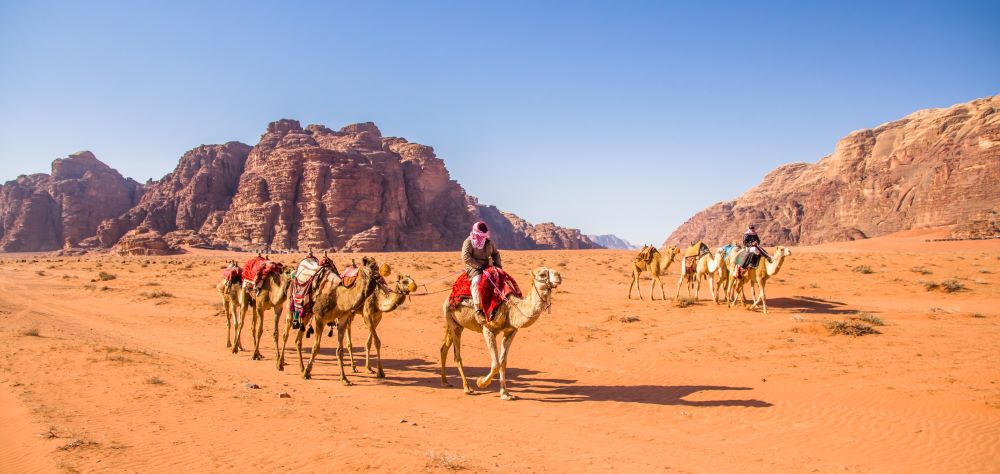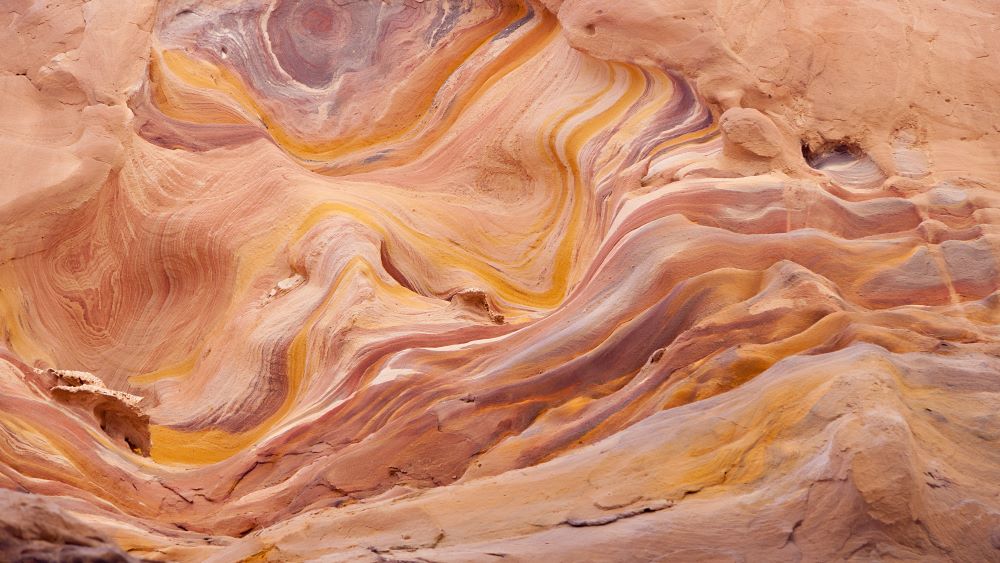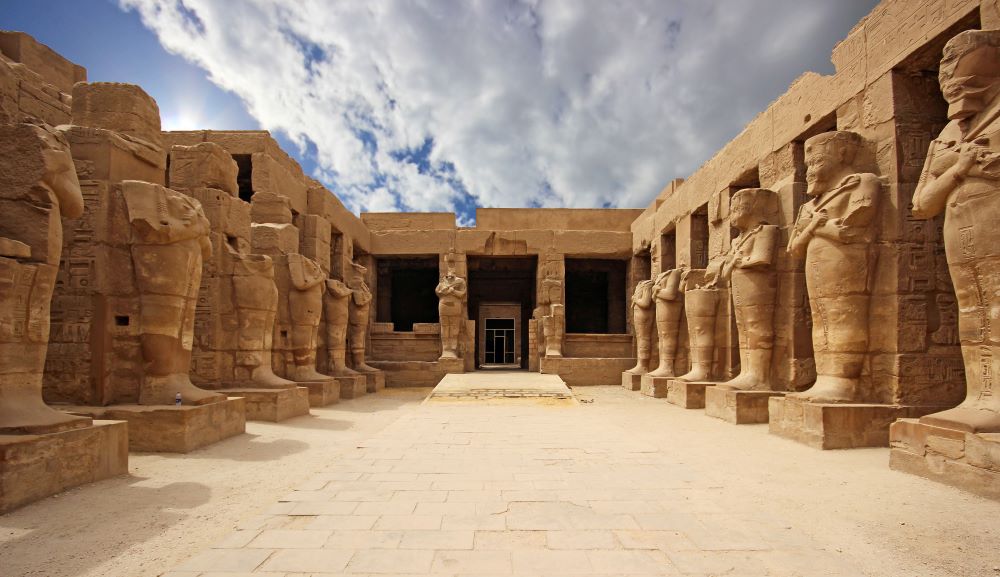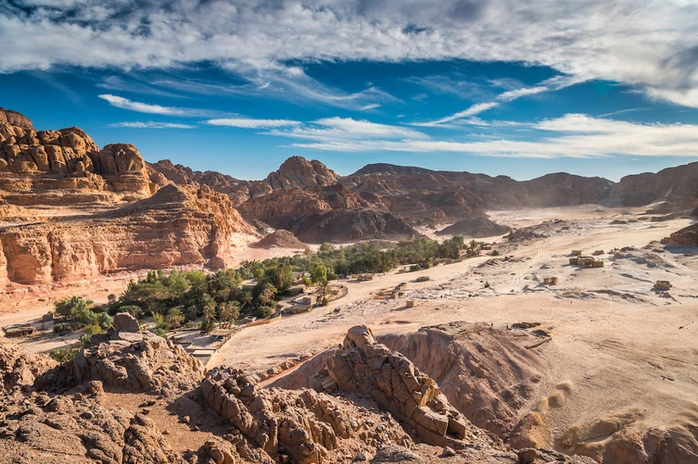The Arab region is home to some of the world’s most fabled mountain ranges, housing a wealth of natural, historical, and spiritual sites. In recent years, several hiking trails have been established to let visitors from the world over experience this exceptional landscape on foot, guided by the region’s native Bedouin populations.
In 2015, Egypt saw the launch of its first long-distance hiking trail: the Sinai trail, which stretches over 550 kilometers through the territories of eight Bedouin tribes. Its sister project, the Red Sea Mountain Trail, was established in mainland Egypt in 2019; followed by the Wadi Rum Trail in Jordan, launched in early 2023.
Early this month, the three sister trails were combined into a single intercontinental hiking route: the Bedouin Trail. The newly launched trail is the first to link Asia and Africa, and aims to give visitors a unique overview of the region’s landscape and heritage. The longest of its kind in the Arab World, this 1200 kilometer route runs from the archeological city of Petra in Jordan, to the ancient city of Luxor in Upper Egypt.
Like its three sister projects, the Bedouin Trail is run by an intertribal Bedouin collective, and passes through the territories of seven tribes – showcasing the intercultural ties that bind the region’s Bedouin peoples, transcending modern notions of statehood.
Traveling Through History
The project’s website indicates that a classic full hike of the Bedouin Trail takes over two months to complete. However, travelers can also complete individual sections of the trail on separate visits or take alternative routes that make the journey shorter. The road can be taken in either direction, but is more easily traveled from north to south.
In the latter case, hikers begin their journey in the archeological city of Petra, in southern Jordan: the ancient capital of the Nabataean Kingdom. Half-built, half-carved into the surrounding mountains, the heritage site has been inhabited since prehistoric times and is known as a historical meeting point of Eastern traditions and Hellenistic architecture.
The first section of the hike runs from Petra to Aqaba, intersecting with its sister Wadi Rum trail in Jordan for 100 kilometers. Along this journey, hikers pass through the Hijaz mountain range – birthplace of Islam and home to the holy cities of Mecca and Madina – before reaching Aqaba, where they take the sea passage to Egypt’s Sinai peninsula.

In Ras Shitan, the Bedouin trail intersects with its sister Sinai Trail, taking travelers through some of the peninsula’s natural and historical landmarks. They include the Colored Canyon, a labyrinth of spectacularly colorful rock formations; the legendary Oasis of Ein Khudra; and Egypt’s highest summit, Mount Catherine.
From the peninsula’s southernmost point in Sharm El Sheikh, hikers cross into neighboring Hurghada in mainland Egypt. At this point, the trail intersects with the northern half of the Red Sea Mountain Trail, which stretches between the valleys of Abu Zagat and Ghuza. Along the way, travelers ascend to the summits of Jabal Abu Dukhan, Jebel Gattar, and Jabal Shayib el Banat – mainland Egypt’s highest peak.

The final portion of the hike is the Nile Valley stretch, which comprises three sections. The first is a 70 kilometers trip through the sweeping plains of Egypt’s Eastern Desert, lined with the remnants of Roman roads established in the early days of Ptolemaic rule and used as trade routes up until the early Islamic era. From the upper parts of Wadi Qena, hikers take a tarmac road to Qena, then travel another 80 kilometers south along the Nile valley to Luxor.
The Bedouin Trail does not have a fixed route for this final portion of the trip. Those who choose to travel along the Eastern bank of the Nile will arrive at the Karnak Temple Complex, the largest religious structure ever built, and developed over the course of a millenia.
Those who travel along the Western bank will end their journey in the Valley of the Kings, the final resting place of New Kingdom Pharaohs. Along the way, they may pass through the towns of Dendera – home to one of Egypt’s most spectacular temples – and Naquadah, which also houses archeological ruins and monasteries.

Preserving cultural heritage
Connecting two capitals of the ancient world, the Bedouin Trail aims to take its visitors on a journey through human history, highlighting the cultures and historical turns that have contributed to the making of the modern Middle East.
Another one of the trail’s stated aims is to boost the regional tourism economies, “creating jobs that offer younger Bedouin a chance to remain connected to the desert and through which traditional knowledge and skills can be kept more relevant.”
Egypt and the region’s Bedouin communities have long suffered from socioeconomic marginalization, exacerbated by rapid urbanization and the concentration of work opportunities in metropolises. These combined factors, along with the growing threat of climate change, put Bedouin cultures and tradition at risk of disappearance.
Though the project’s founders acknowledge that tourism alone cannot prevent this cultural loss; projects like the Bedouin Trail and its counterparts in Sinai, mainland Egypt, and Jordan can hopefully shed light on these communities and lay the groundwork for a more sustainable and culturally responsible tourist economy.







Comments (2)
[…] Source link […]
[…] Source link […]